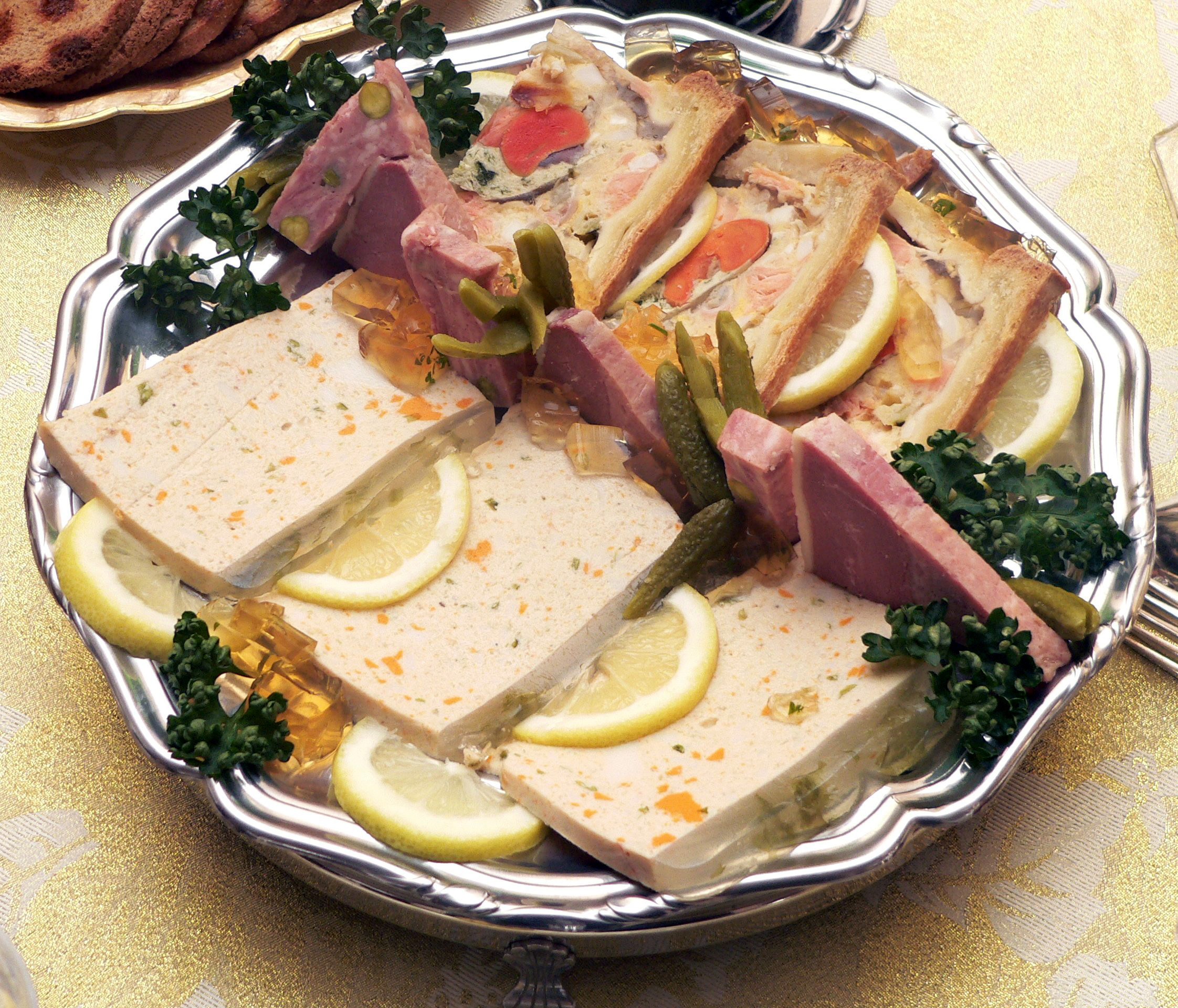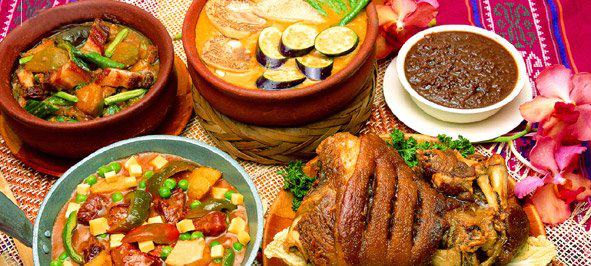|
Isaw
''Isaw'' is a popular street food from the Philippines, made from barbecued pig or chicken intestines. It is a type of '' inihaw''. The intestines are cleaned several times and are then either boiled, then grilled on sticks. For presentability, the intestines are usually applied with orange food coloring. Once cooked, it is usually dipped in vinegar or ''sukang pinakurat'' (vinegar with onions, peppers, and other spices). They are usually sold by vendors on street corners during the afternoons. See also * Inihaw * Proben * Filipino cuisine § Street food and other snacks * Satay * Kwek Kwek * Chitterlings References Offal Street food in the Philippines Philippine snack food {{meat-stub ... [...More Info...] [...Related Items...] OR: [Wikipedia] [Google] [Baidu] |
Inihaw
Inihaw ( ), also known as sinugba or inasal, are various types of grilled or spit-roasted barbecue dishes from the Philippines. They are usually made from pork or chicken and are served on bamboo skewers or in small cubes with a soy sauce and vinegar-based dip. The term can also refer to any meat or seafood dish cooked and served in a similar way. Inihaw are commonly sold as street food and are eaten with white rice or rice cooked in coconut leaves (''pusô''). Inihaw is also commonly referred to as Filipino barbecue or (informally) Pinoy BBQ. Description Inihaw is a general term simply meaning "grilled" or "roasted" in Tagalog, from the verb ("to grill"). It is also known as ''sinugba'' (verb , "to grill") in Cebuano, and ''inasal'' (verb ''asal'', "to roast in dry heat, to skewer") in both Cebuano and Hiligaynon. It may also be referred to simply by the English name "barbecue" (usually shortened to "BBQ"), especially for inihaw served in skewers. In other languages of th ... [...More Info...] [...Related Items...] OR: [Wikipedia] [Google] [Baidu] |
Offal
Offal (), also called variety meats, pluck or organ meats, is the internal organ (anatomy), organs of a butchered animal. Offal may also refer to the by-products of Milling (grinding), milled grains, such as corn or wheat. Some cultures strongly consider offal consumption to be taboo, while others use it as part of their everyday food, such as lunch meats, or, in many instances, as Delicacy, delicacies. Certain offal dishes—including ''foie gras'' and ''pâté''—are often regarded as gourmet food in the culinary arts. Others remain part of traditional regional cuisine and are consumed especially during holidays; some examples are sweetbread, Jewish chopped liver, Scottish haggis, U.S. chitterlings, and Mexican Menudo (soup), menudo. On the other hand, intestines are traditionally used as casing for sausages. Depending on the context, ''offal'' may refer only to those parts of an animal carcass discarded after butchering or skinning; offal not used directly for human or anim ... [...More Info...] [...Related Items...] OR: [Wikipedia] [Google] [Baidu] |
Proben
''Proben'' or proven, sometimes also called "chicken proben", is a type of street food popular in some regions of the Philippines. It consists essentially of the proventriculus of a chicken (thus, the derivation of its name), dipped in cornstarch or flour, and deep-fried. It is served either in a small bagful of vinegar, or skewered on bamboo sticks to be dipped in the vinegar and onion just before it is eaten. Description Proben originated in the city of Cagayan de Oro. It is also eaten in Cebu City, Iligan City and other parts of Mindanao. Nutritional value A nutritional study conducted by the University of the Philippines Los Baños (UPLB) noted that, as with most street foods, the microbial quality of the proben is a concern. However, the study noted that the pathogenic food-borne microbes in proben are mostly destroyed when it is cooked. The microbes only return if the proben is stored at ambient temperature after having been cooked. The study concluded that the ri ... [...More Info...] [...Related Items...] OR: [Wikipedia] [Google] [Baidu] |
Satay
Satay ( , in the US also ), or sate in Indonesia, is a Javanese cuisine, Javanese dish of seasoned, skewered and grilled meat, served with a sauce. Satay originated in Java, but has spread throughout Indonesia, into Southeast Asia, Europe, America, and beyond. Indonesian satay is often served with peanut sauce and kecap manis – a sweet soy sauce, and is often accompanied with ketupat or lontong, a type of rice cake, though the diversity of the country has produced a wide variety of satay recipes. It is also popular in many other Southeast Asian countries including Brunei, Malaysia, Philippines, Singapore and Thailand. It also recognized and popular in Suriname and the Netherlands. In Sri Lanka, it has become a staple of the local diet as a result of the Sri Lankan Malays, influences from the local Malay community. Satay may consist of diced or sliced Chicken (food), chicken, goat, Lamb and mutton, mutton, beef, pork, Fish (food), fish, other meats, or tofu; bamboo skewer ... [...More Info...] [...Related Items...] OR: [Wikipedia] [Google] [Baidu] |
Tokneneng
''Tokneneng'' (or ''tukneneng'') is a tempura-like Filipino street food made by deep-frying hard-boiled chicken or duck eggs covered in orange batter. A popular variation of ''tokneneng'' is ''kwek kwek''. ''Kwek-kwek'' is traditionally made with quail eggs, which are smaller, with batter made by mixing annatto powder or annatto seeds that have been soaked in water. ''Kwek-kwek'' and ''tokeneneng'' are often falsely used interchangeably. To cook ''kwek-kwek'', the cooking oil needs to be at least 160°F (71°C). ''Tokneneng'' is commonly found at street food stalls, often with fish balls, squid balls, and kikiam. It is usually served with either a tangy vinegar-based dip (plain or spicy), or a thick sweet sauce made of flour, soy sauce, garlic, onions, and sugar. History The word ''tukneneng'' originated from the 1978 Pinoy Komiks series ''Batute'', illustrated by Vic Geronimo and created by Rene Villaroman. In the language of the protagonist, Batute, ''tukneneng'' ... [...More Info...] [...Related Items...] OR: [Wikipedia] [Google] [Baidu] |
Philippines
The Philippines, officially the Republic of the Philippines, is an Archipelagic state, archipelagic country in Southeast Asia. Located in the western Pacific Ocean, it consists of List of islands of the Philippines, 7,641 islands, with a total area of roughly 300,000 square kilometers, which are broadly categorized in Island groups of the Philippines, three main geographical divisions from north to south: Luzon, Visayas, and Mindanao. With a population of over 110 million, it is the world's List of countries and dependencies by population, twelfth-most-populous country. The Philippines is bounded by the South China Sea to the west, the Philippine Sea to the east, and the Celebes Sea to the south. It shares maritime borders with Taiwan to the north, Japan to the northeast, Palau to the east and southeast, Indonesia to the south, Malaysia to the southwest, Vietnam to the west, and China to the northwest. It has Ethnic groups in the Philippines, diverse ethnicities and Culture o ... [...More Info...] [...Related Items...] OR: [Wikipedia] [Google] [Baidu] |
Snack
A snack is a small portion of Human food, food generally Eating, eaten between meals. Snacks come in a variety of forms including Food packaging, packaged snack foods and other processed foods, as well as items made from fresh ingredients at home. Traditionally, snacks are prepared from a number of ingredients commonly available at home without a great deal of preparation. Often Lunch meat, cold cuts, fruits, leftovers, Nut (fruit), nuts, sandwiches, and Candy, sweets are used as snacks. With the spread of convenience stores, packaged snack foods became a significantly profitable business. Snack foods are typically designed to be portable, quick, and satisfying. Food processing, Processed snack foods, as one form of convenience food, are designed to be less perishable, more durable, and more portable than prepared foods. They often contain substantial amounts of Sugar substitute, sweeteners, preservatives, and appealing ingredients such as chocolate, peanuts, and specially d ... [...More Info...] [...Related Items...] OR: [Wikipedia] [Google] [Baidu] |
Street Food
Street food is food sold by a Hawker (trade), hawker or vendor on a street or at another public place, such as a market, fair, or park. It is often sold from a portable food booth, food cart, or food truck and is meant for immediate consumption. Some street foods are regional, but many have spread beyond their regions of origin. Most street foods are classified as both finger food and fast food, and are generally cheaper than restaurant meals. The List of street foods, types of street food vary between regions and cultures in different countries around the world. According to a 2007 study from the Food and Agriculture Organization, 2.5 billion people eat street food every day. While some cultures consider it to be rude to walk on the street while eating, a majority of middle- to high-income consumers rely on the quick access and affordability of street food for daily nutrition and job opportunities, particularly in developing countries. Today governments and other organization ... [...More Info...] [...Related Items...] OR: [Wikipedia] [Google] [Baidu] |
Intestines
The gastrointestinal tract (GI tract, digestive tract, alimentary canal) is the tract or passageway of the digestive system that leads from the mouth to the anus. The tract is the largest of the body's systems, after the cardiovascular system. The GI tract contains all the major organs of the digestive system, in humans and other animals, including the esophagus, stomach, and intestines. Food taken in through the mouth is digested to extract nutrients and absorb energy, and the waste expelled at the anus as feces. ''Gastrointestinal'' is an adjective meaning of or pertaining to the stomach and intestines. Most animals have a "through-gut" or complete digestive tract. Exceptions are more primitive ones: sponges have small pores ( ostia) throughout their body for digestion and a larger dorsal pore ( osculum) for excretion, comb jellies have both a ventral mouth and dorsal anal pores, while cnidarians and acoels have a single pore for both digestion and excretion. The human ... [...More Info...] [...Related Items...] OR: [Wikipedia] [Google] [Baidu] |
Filipino Cuisine
Filipino cuisine is composed of the cuisines of more than a hundred distinct Ethnic groups in the Philippines, ethnolinguistic groups found throughout the Philippines, Philippine archipelago. A majority of mainstream Filipino dishes that comprise Filipino cuisine are from the food traditions of various ethnolinguistic groups and tribes of the archipelago, including the Ilocano people, Ilocano, Pangasinan people, Pangasinan, Kapampangan people, Kapampangan, Tagalog people, Tagalog, Bicolano people, Bicolano, Visayan, Chavacano, and Maranao people, Maranao ethnolinguistic groups. The dishes associated with these groups evolved over the centuries from a largely indigenous (largely Austronesian peoples, Austronesian) base shared with maritime Southeast Asia with varied influences from Chinese cuisine, Chinese, Spanish cuisine, Spanish, and American cuisine, American cuisines, in line with the major waves of influence that had enriched the cultures of the archipelago, and adapted us ... [...More Info...] [...Related Items...] OR: [Wikipedia] [Google] [Baidu] |
Chitterlings
Chitterlings ( ), sometimes spelled chitlins or chittlins, are a food most commonly made from the small intestines of pigs, though cow, lamb, goose and goat may also be used. They may be filled with a forcemeat to make sausage.''Oxford English Dictionary'', 1st edition, updated March 2021''s.v.''/ref> Etymology and early usage ''Chitterling'' is first documented in Middle English in the form , . Various other spellings and dialect forms were used. The primary form and derivation are uncertain. A 1743 English cookery book ''The Lady's Companion: or, An Infallible Guide to the Fair Sex'' contained a recipe for "Calf's Chitterlings" which was essentially a bacon and offal sausage in a calf's intestine casing. The recipe explained the use of calves', rather than the more usual pigs', intestines with the comment that " hesesort of... puddings must be made in summer, when hogs are seldom killed". This recipe was repeated by the English cookery writer Hannah Glasse in her 1784 coo ... [...More Info...] [...Related Items...] OR: [Wikipedia] [Google] [Baidu] |





